Purple is a popular color when it comes to flowers, and it’s easy to see why. With lighter shades that can relax and soothe you, darker shades that add depth, and bright purples that are exciting and cheery, there is a purple flower for any garden. For flower bed layering, purple blooms can brighten shady gardens or add depth to a vibrant one, depending on the shade of purple. Whether you’re looking for a single purple flower to round out your garden or want to dedicate an entire garden to your favorite color, here are the purple flowers you should look for!
Lavender

We couldn’t write a list of purple plants and not include lavender! Lavender is an incredibly hardy plant that’s typically perennial in climate zones 5 through 9. Its delicate purple blooms and calming fragrance are highlights of its appeal, but they aren’t the only ones. Lavender is also an easy plant to take care of.
It grows prolifically and is incredibly forgiving with occasional bouts of neglect. It appreciates full sun and well-draining soil for lush expansion across your garden bed. You only need to water it when its soil feels dry—there’s not much need to fertilize it, as mixing in compost when you first plant it should be sufficient.
Forest pansy
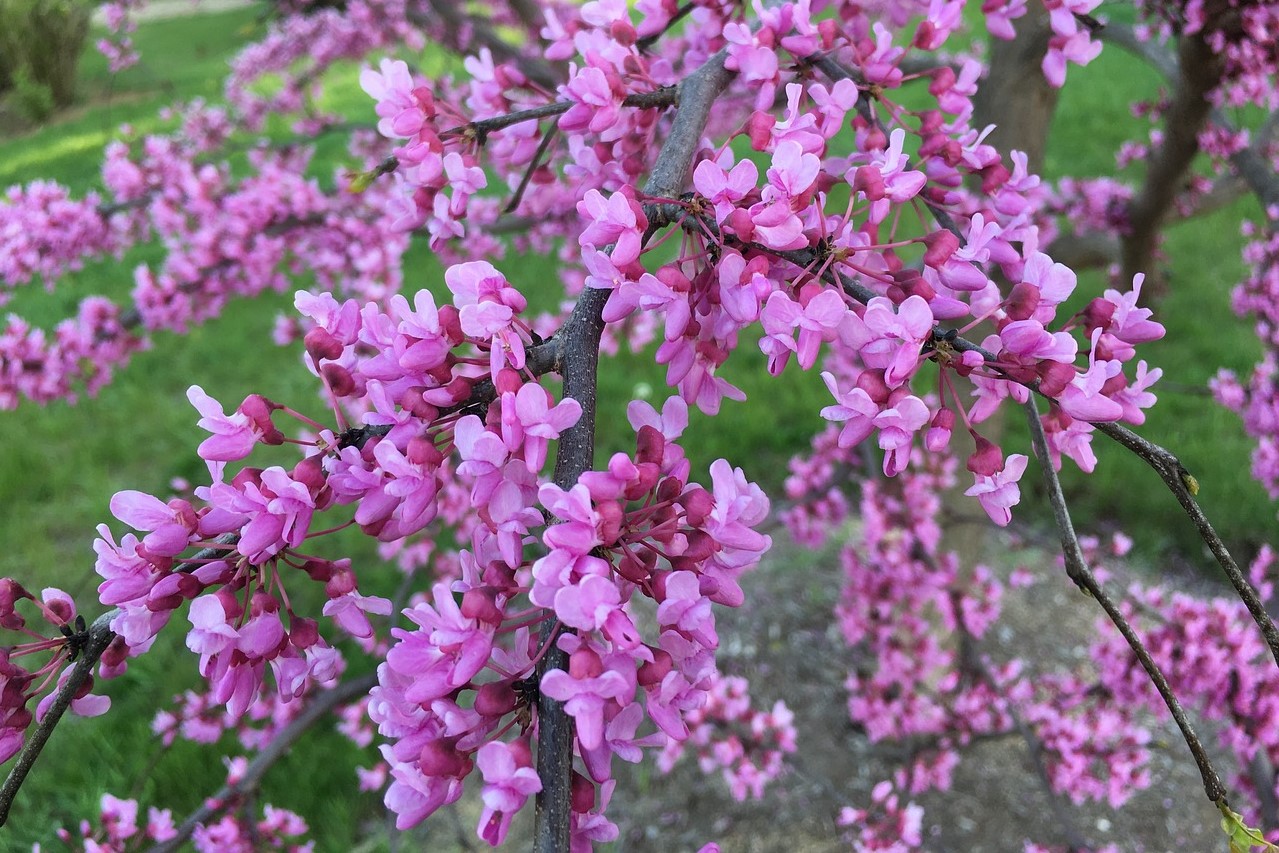
In the fall, the forest pansy features a warm, red-orange color. During springtime, this small tree will flaunt pansy-like flowers that are a pretty lilac color. It does have specific needs, however. Doing best in climate zones 5 through 9, this plant will thrive in bright, direct light and weekly watering. The forest pansy should be situated in a place where it can’t move around too much — saplings do best with structural support. As a tree, it also takes up more room than other plants on this list, so be sure you have space available!
Grape hyacinth
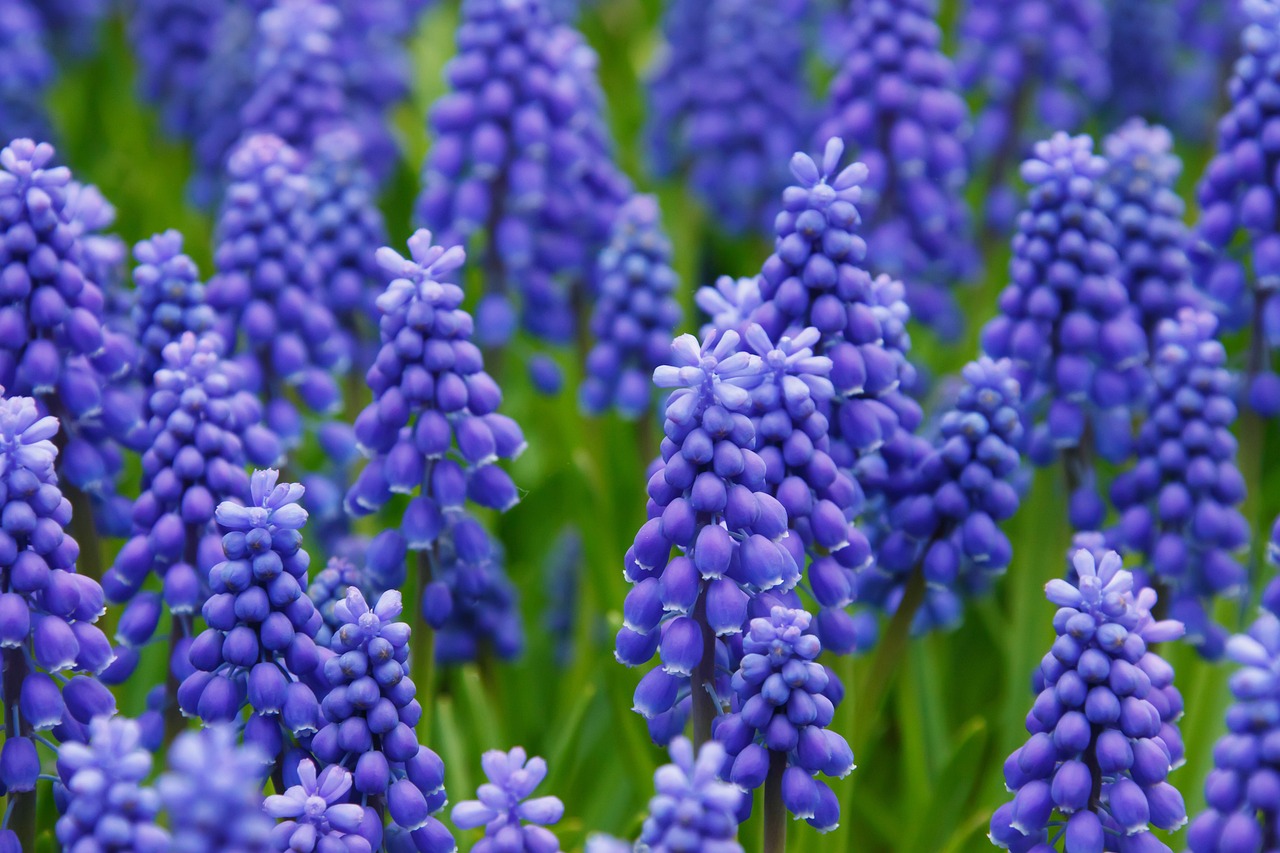
Despite their name, grape hyacinths are not actually related to hyacinths. Instead, they are in the asparagus family! These little perennials grow in clumps and bloom in early to mid-spring. They love sunny spots, and they can spread quite quickly, both through their seeds and through underground offshoots. Luckily, you can easily control their spread by growing them in containers. You can find grape hyacinths in blue, white, pink, and, of course, purple.
Purple passion plant
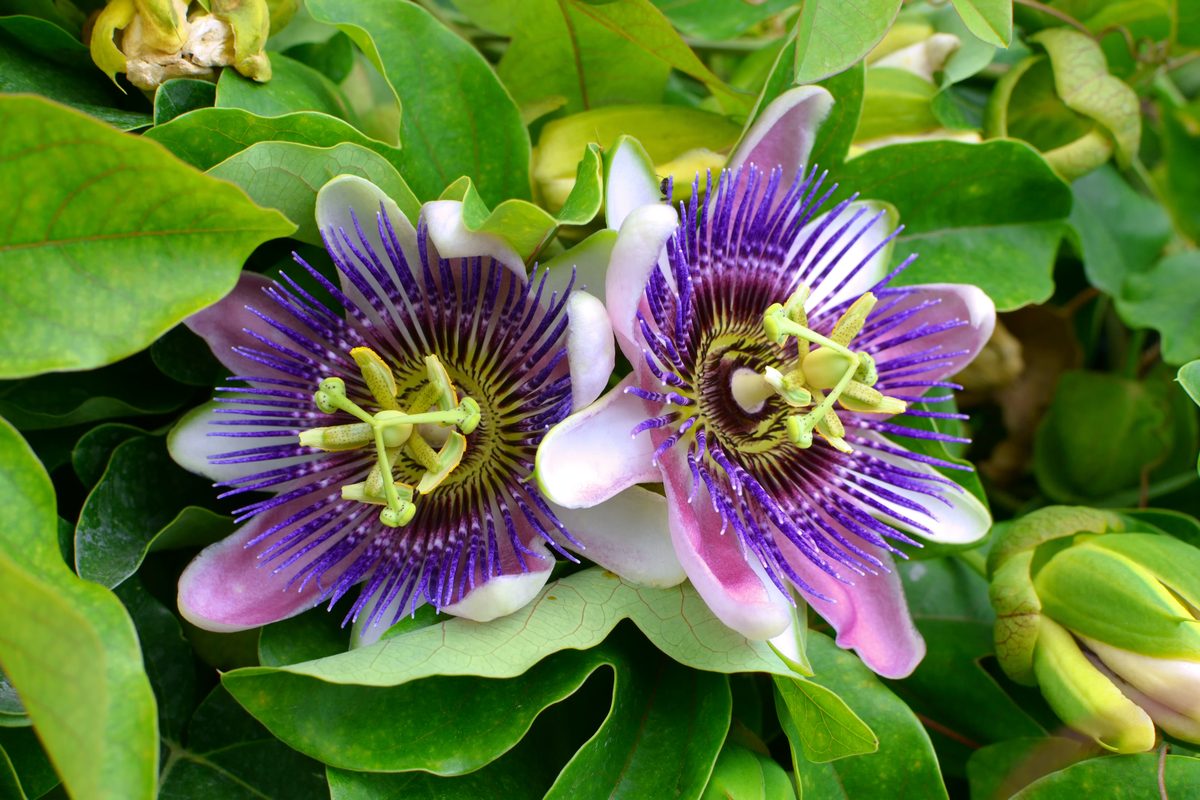
With velvety leaves covered in purple hairs, this foliage plant from Southeast Asia will certainly add a pop to your patio in zones 6 through 9, though many people also keep it as a houseplant. As long as you don’t overwater it, it should last you a good two to three years. Its pinkish-purple color makes it an ideal plant for spring — in fact, or prefers mild spring temperatures around 60 to 70 degrees Fahrenheit.
With this plant, more sunlight will deepen its brighter purple color, but direct light can also cause it to wilt and burn. To encourage growth, pinch the ends. Cut the flowers when they bloom, as they can become quite smelly.
Lavender pebbles

For a light wash of purple color, add Lavender Pebbles, or Graptopetalum amethystinum, to the succulent arrangement in your garden. This cheerful plant is just what it sounds like, coming in chubby oval shapes that can fill out spaces next to your echeverias, crassulas, and hens and chicks. Like most succulents, it’s relatively low maintenance, but it does best in full sun — the more light you can give it, the more prominent its color will be.
Balloon flowers
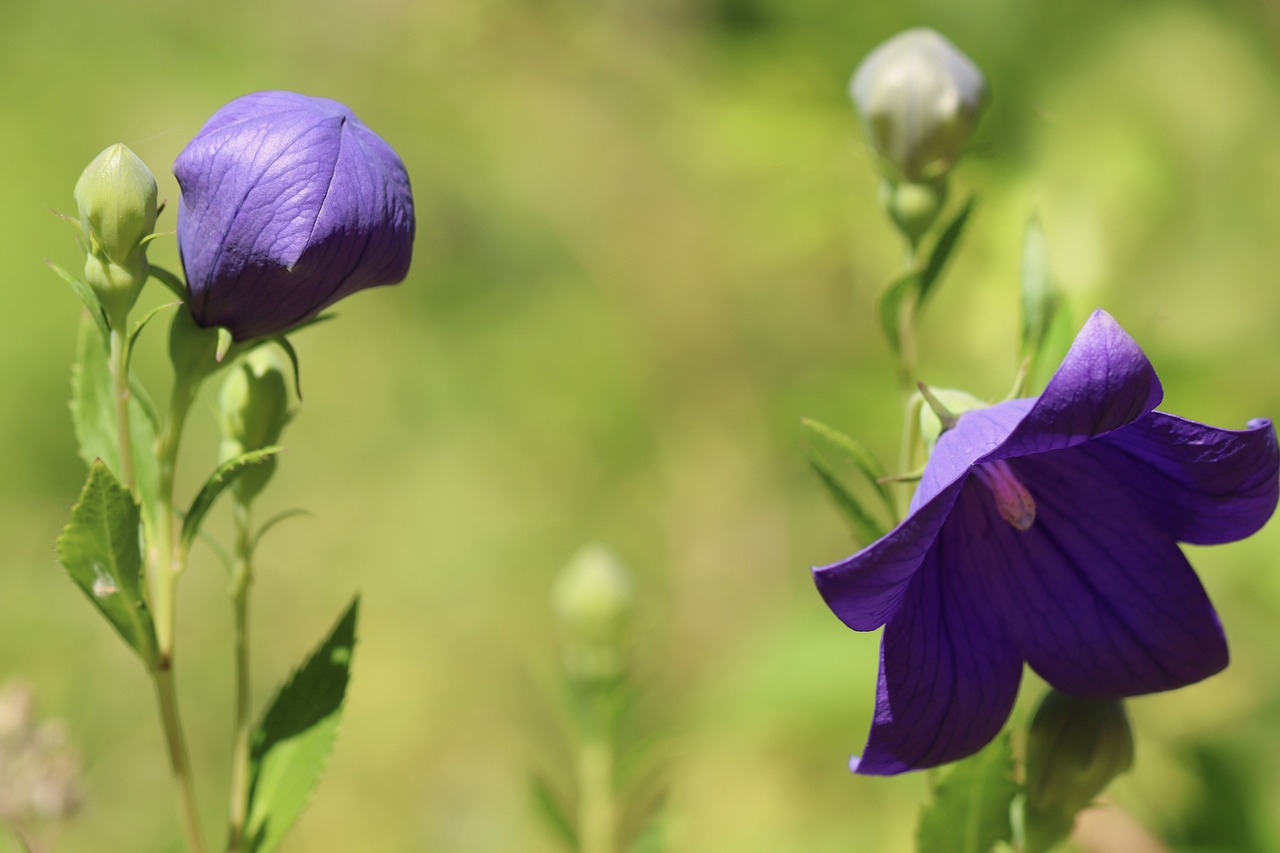
Balloon flowers, or Platycodon grandiflorus, get their name from their large, balloon-like buds. These buds burst open into stunning violet flowers. You can grow balloon flowers indoors, in containers, and outdoors. They’re easy to care for as long as they have rich, well-draining soil. Keep your balloon flowers in full sun to partial shade, and soon you’ll have tall clumps of flowers.
Hydrangea
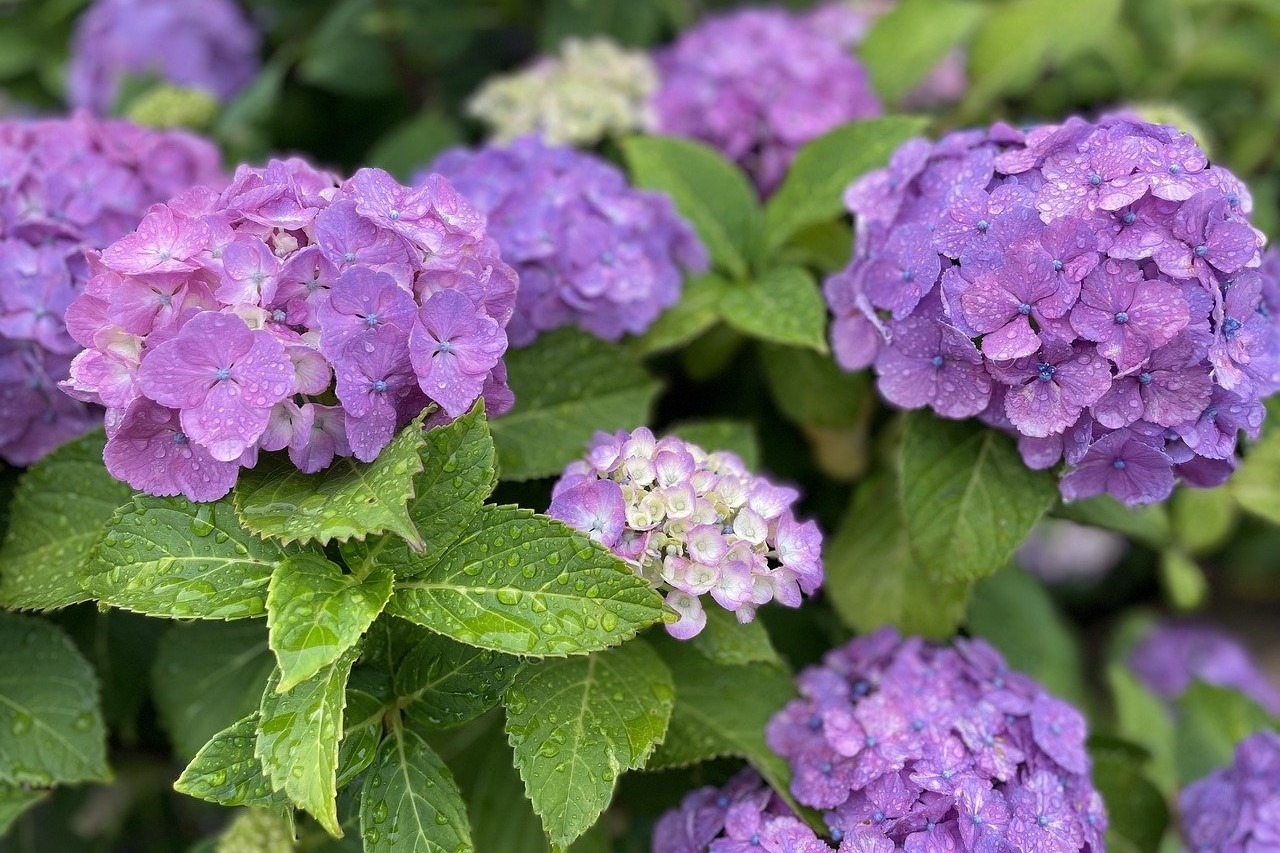
Hydrangeas come in all kinds of colors, but a few trademarked types flaunt lovely washes of purple — think, Let’s Dance® Rhythmic Blue®, and Wee Bit Grumpy®. You can also experiment with your soil pH to get the color you want — acidic soil can make your hydrangeas purple or blue. The big, round flowers make a statement addition to your flower garden. Care for your hydrangeas in moderation since it can get sick with too much or too little care; it prefers medium watering and ample shade to thrive.
Tradescantia zebrina
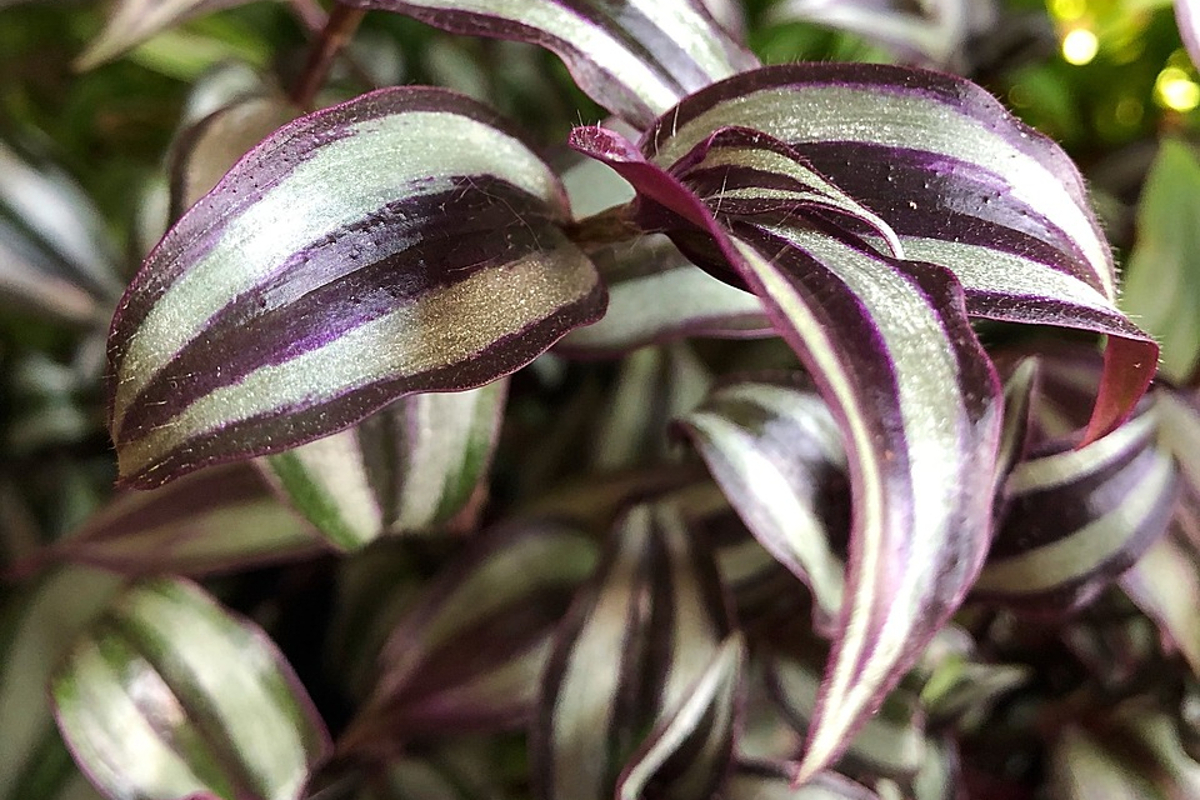
The Tradescantia zebrina can be the gift that never stops giving. This stunning plant features silvery leaves with stripes and a deep purple underside. With sufficient light and moist soil, it can keep pushing out new leaves. Native to Mexico, it’s hardy in climate zones 9 through 11, where it won’t freeze in the winter. That said, this tradescantia can also be kept indoors in most places as a stunning houseplant year-round; it looks especially stunning trailing from hanging planters.
Purple heart plant
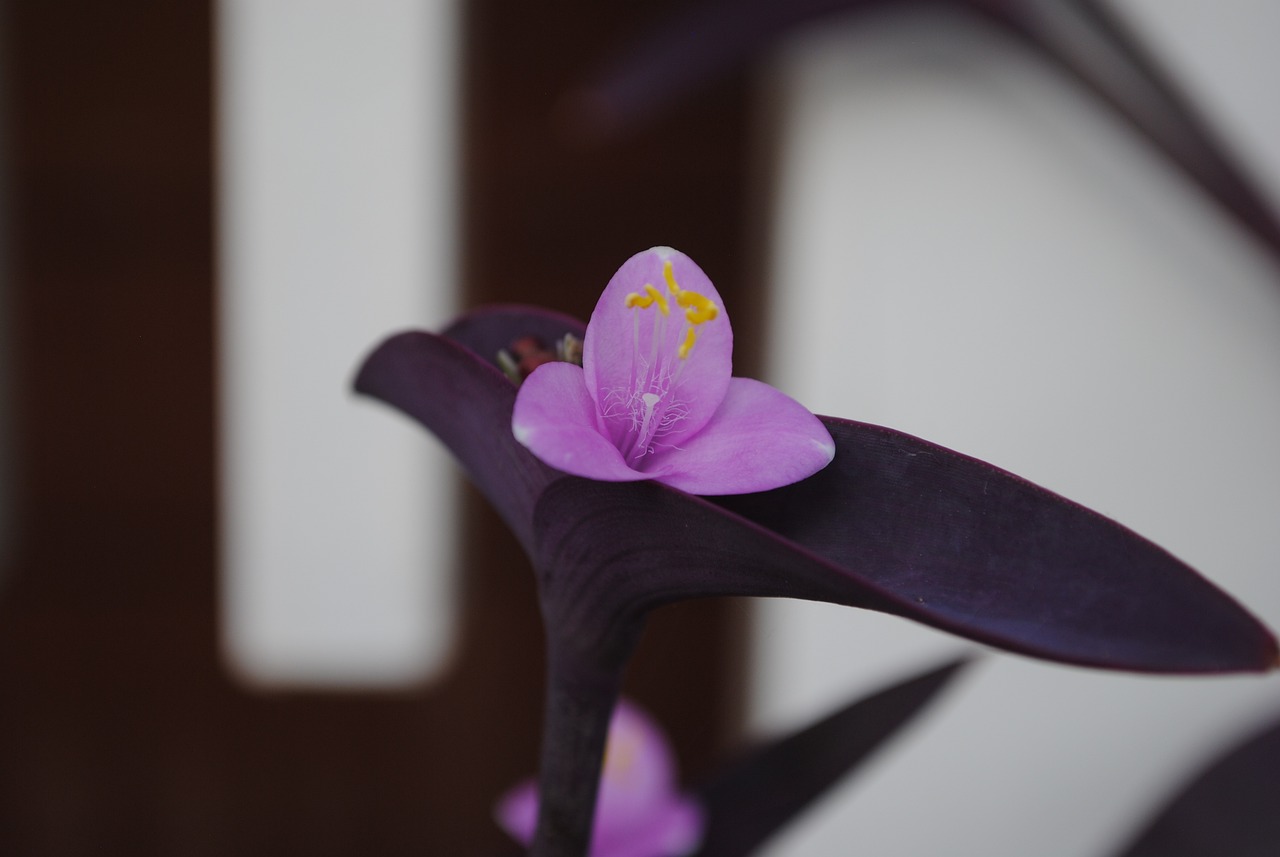
For those of you wishing that Tradescantia zebrina was just a little more purple, you’ll be happy to hear about its cousin, Tradescantia pallida. Also called the purple heart plant, this lovely plant has solid plum-colored leaves and stems with smaller light purple flowers. Similarly to its striped cousin, this plant can grow indoors anywhere and outdoors in zones 9 through 11. For the most vivid color, keep your purple heart plant in full sun.
Oxalis triangularis

The Oxalis triangularis, aka the false shamrock plant, resembles violet butterflies. It can be grown outside in zones 6 through 11, or be kept indoors or as annuals in other places. It makes for a particularly cheerful plant during the spring, during which you’ll likely find it in grocery stores. Like prayer plants, it folds its leaves at night and opens wide in the morning. To grow it from scratch, you can simply shove bulbs into the soil. Inside, this plant may go dormant every few years, so don’t fret if the leaves look dead. Hold back on watering — when you see a leaf pop up, start watering again.
Phlox

Phlox can be found in a range of colors, but some of the most popular varieties are purple and white. Of the many phlox species, most are native to the U.S., making this a great choice for gardeners who prefer growing native plants. They can grow in containers, and pollinators enjoy them.
For the best results, plant your phlox in rich, well-draining soil in an area with full to partial sun. As native wildflowers, phlox is adapted to grow in the natural rainfall levels throughout most of the U.S., so you only need to water them while they’re young and during sustained periods of drought.
If you’re in search of a pop of color that’s subtle yet statement-making for your garden, consider picking out vibrant purple flowers and foliage plants. From the classic lavender flower to Lavender Pebbles, your options are wide-ranging, no matter your budget and preference. You’ve got everything from low-maintenance succulents to blooms that might require a little more care. Whichever purple plants you choose, you’ll be able to add a refreshingly cool color to your garden with them.




